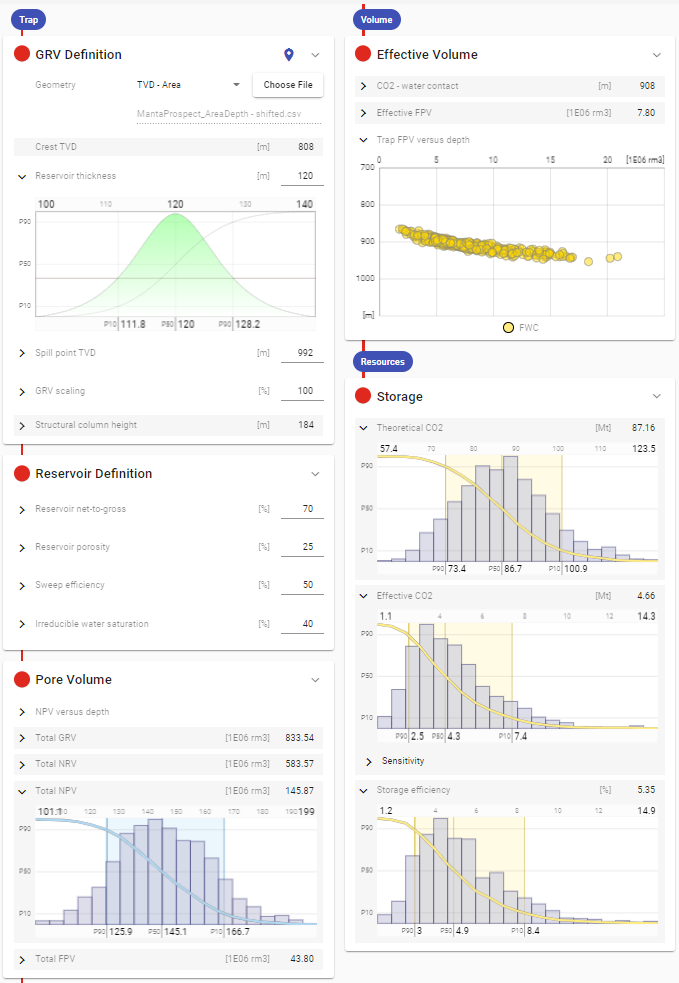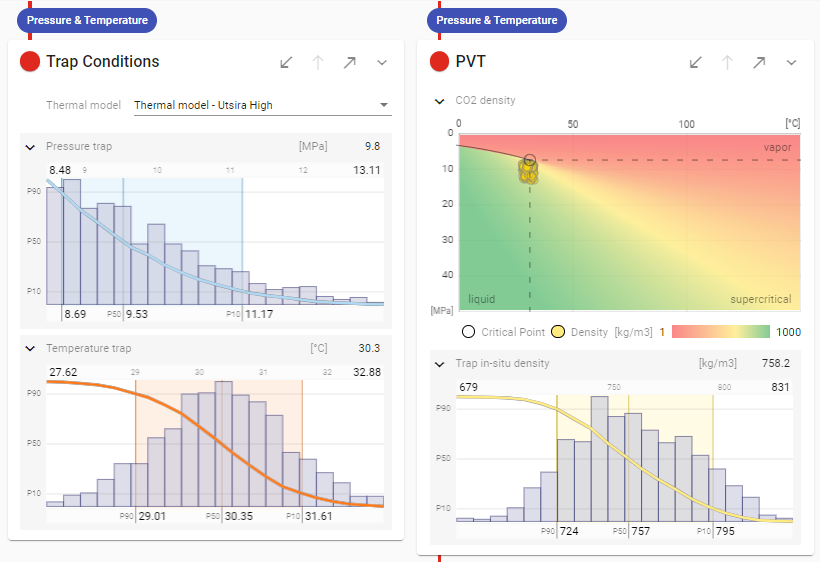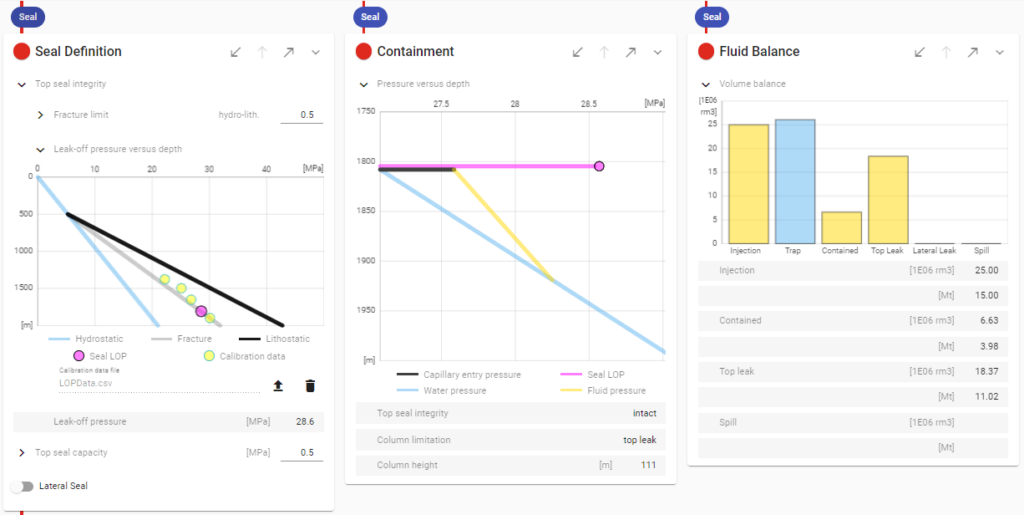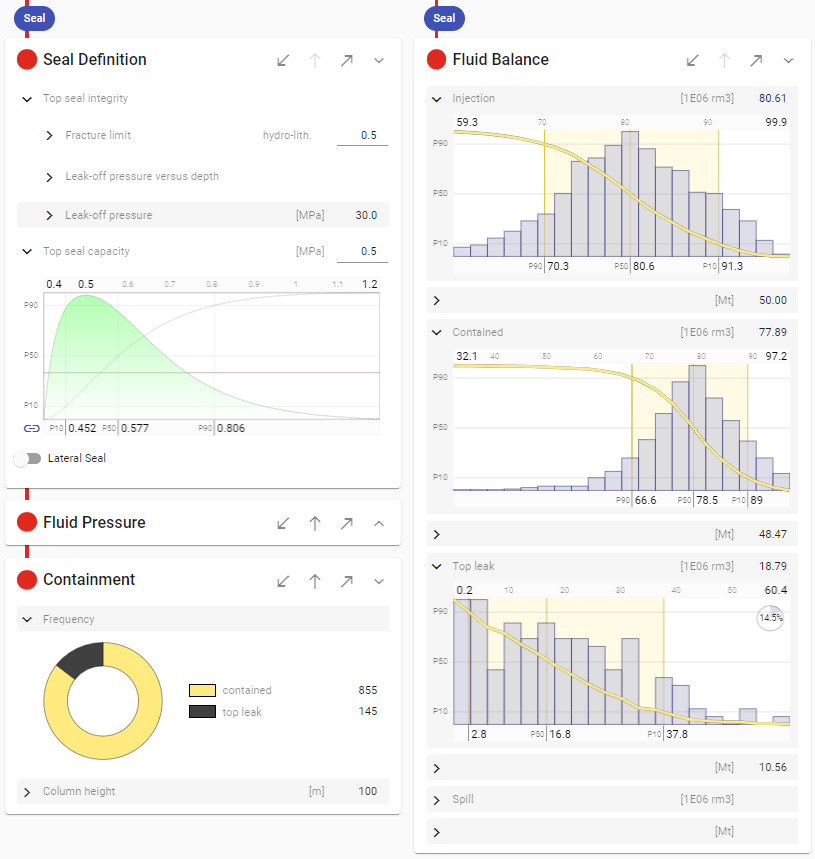The assessment workflow for structured aquifers shows some similarities to the oil & gas prospect assessment.
A standard assessment involves the estimation of pore volume to derive theoretical and effective storage capacity.
However, pressure-volume-temperature (PVT) relationships become important to predict the in-situ CO2 phase, and pressure & seal need to be considered for containment calculations.
Pore volume
The simplest assessment considers the pore volume of the entire structure. The input parameters for the net pore volume (NPV) calculation are:
- Trap area versus depth and thickness to calculate gross rock volume (GRV), or alternatively direct input of GRV versus depth,
- Reservoir net-to-gross and porosity.
Using standard density ranges, the NPV at the lowest part of the trap is converted into theoretical storage capacity (in mass).
The theoretical storage capacity is scaled down to effective storage capacity by the following parameters
- Sweep efficiency to account for the fact that not every part of the structure will be reached by the injection plume,
- Residual water saturation to deduce the pore volume by the non-displaced water,
- A limited CO2 column height for a safety buffer to avoid spill.


PVT
CO2 is very sensitive to pressure and temperature conditions, in particular in the shallower subsurface, where CO2 injection is economic.
In Ariane for Carbon Storage, we therefore can optionally derive the in-situ phase and density based on a probabilistic estimation of reservoir pressure and temperature.
Pressure & Seal
A major concern in carbon storage is the leak of free-phase CO2 through the top seal. This can occur either through seal fracturing or capillary leakage.
Both leak-off pressure and capillary entry pressure data can be used for a pressure balance to estimate whether the top or lateral seal can hold a provided injection mass.


Probabilistic containment risk
In a probabilistic calculation 1,000 or 10,000 Monte Carlo iterations are generated within seconds, considering uncertain trap pore space, PVT and seal parameters.
As a result, the frequency of top seal failure, top or lateral seal leakage, or spill is calculated.
Also, the contained as well as leaking or spilling volumes and masses are provided to set possible leak and spill mass thresholds.
Therefore, Ariane for Carbon Storage provides an accurate and transparent way of estimating containment risk.
See how we deal with unstructured aquifers.
